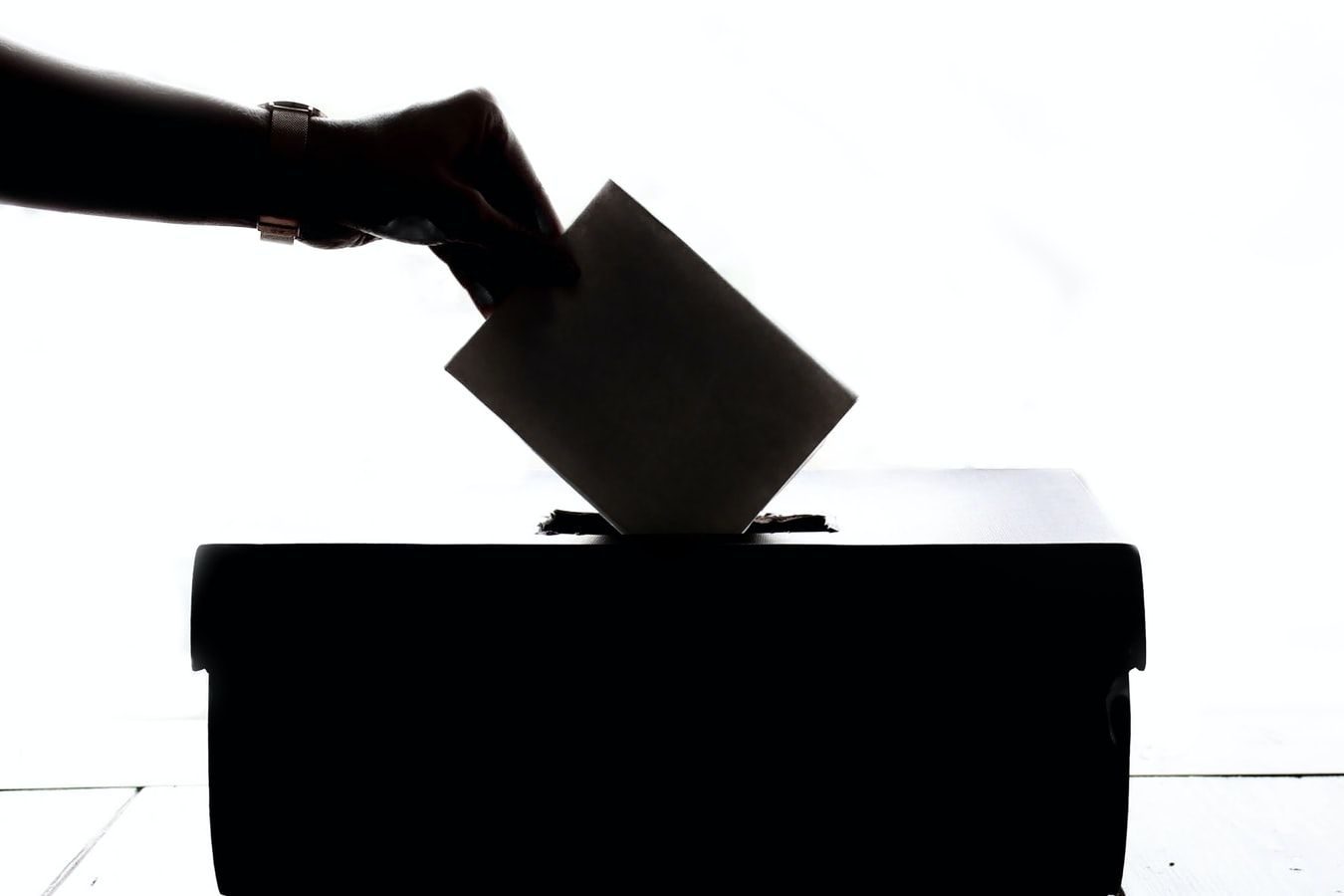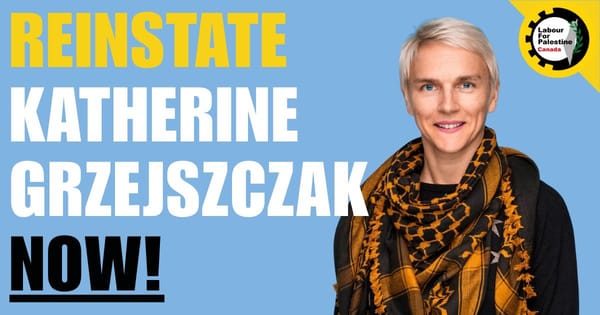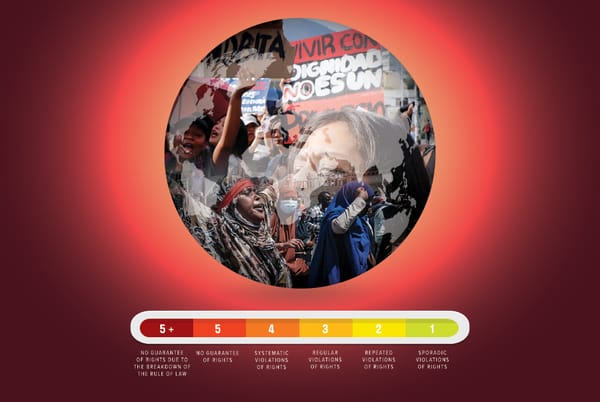
Hi Class Struggle readers,
I wanted to begin this week’s newsletter with some good news. In early June, I wrote about United Steelworkers (USW) nickel miners in Sudbury, Ont., going on strike against their Brazilian-based employer, Vale.
The union was trying to protect post-retirement health care benefits, over-the-counter drug coverage and several other important past gains. Vale was insistent that the company could no longer afford the cost of retiree health benefits, and was crying the blues about lagging profits and the need for workers to take a hit to fund new capital investment.
I’m happy to report that on August 4, after two months on the picket lines, USW 6500 members in Sudbury voted by 85 per cent to approve a new collective agreement, which, in large part, retains the benefits they struck to protect. Most importantly, post-retirement health benefits will continue for all new hires.
Vale was seeking to replace full benefit coverage with a miserly “healthcare spending account” that would have significantly shifted costs onto retirees. In an admirable act of solidarity, current workers (who would not have been affected by this change) spent two months on strike to protect the benefits of future hires.
Although there aren’t huge gains in the new contract, what USW members protected — and the lengths to which they went to achieve this — is certainly worth celebrating. It’s nice to hear some good news on the left!
Now onto this week’s news.
For the past couple of weeks, we’ve been waiting for the official announcement of what everyone assumes is a pending federal election in Canada, and it now appears that the campaign will kick off tomorrow. All party leaders are already looking like they’re in campaign mode, traversing the country, shoring up support in key strongholds and testing campaign promises and messaging.
It brings me little joy to report on what in all likelihood will be several weeks of political theatre, followed by very little change, both in terms of the composition of parliament and the general trajectory of Canadian politics at the federal level.
With the next scheduled federal election in October 2023, it seems that Trudeau and the Liberals sense an opportunity to call an early election and transform their present minority government into a majority. As it stands, the Liberals have about a 50 per cent chance of pulling that off.
Currently polling at just under 29 per cent (with the potential to lose 16 seats), the Conservatives remain unpopular and are unlikely to win sought-after seats in the Greater Toronto Area and Quebec. Party Leader Erin O’Toole’s flirtation with ‘pro-worker’ right populism didn’t bear fruit, and with Donald Trump gone south of the border, he perhaps senses that those political winds have shifted. The Tories seem rudderless and ill-prepared for an election. In fact, they claim they don’t want one at all. The Liberals are well-aware.
Of course, on paper the chance of a majority power grab is not sufficient reason to call an early election. Trudeau will likely justify his decision to the new Governor General, Mary Simon, with some reference to obstruction or difficulty passing legislation in parliament.
The problem with that is that since forming government in 2019, the Liberals have had little trouble maintaining the confidence of the House of Commons, largely because the NDP have been able to negotiate modifications to various pandemic-related spending programs and policy interventions, and have therefore signalled no appetite for bringing the 43rd Parliament to a premature end.
Although many on the left have had their criticisms of this approach (particularly of the resultant employer abuses of the Canada Emergency Wage Subsidy program, which they NDP did little to prevent), it’s also the case that the NDP’s position in Parliament has allowed them to improve pandemic support for the un- and under-employed, particularly through the Canada Emergency Response Benefit.
The same can be said with respect to the Liberal budget announcement in April. The NDP counterweight in Parliament is partially responsible for these modest spending commitments. While at times too much is made of the potential for social policy gains under Liberal minority governments, it’s also likely that NDP pressure from the left has helped fend off austerity and at least committed Trudeau to expand social spending on items like national child care.
This raises an interesting question: What do the Trudeau Liberal’s hope to accomplish with their desired majority government?
Andrew Jackson, senior policy advisor at the Broadbent Institute, wrote an interesting take on the pending election last week. An early election, according to Jackson, probably indicates the Liberals would like to do much less, not more, when it comes to pandemic and post-pandemic spending and legislation.
As he points out, pandemic income supports — already cut significantly — are set to expire in October, just after a potential election. No doubt the Liberals would also like to leave any talk of permanently reforming and expanding programs shown by the pandemic to be inadequate, such as Employment Insurance, in the realm of discussion.
In classic Liberal style, Trudeau and his government would love to claim victory for relatively generous COVID-19 relief before the familiar return of public spending restraint, particularly as national pharmacare, greater spending for public eldercare and other healthcare related items are likely to be issues in a future Parliament.
Removing the need for NDP support would allow a majority Liberal government to pay lip service to these concerns while not delivering any funds to actually address them, and, overall, to reign in expansionary spending and (re)open the door to austerity.
Having already announced a relatively generous — though still inadequate — budget, Trudeau and company are also dropping other spending and program promises typical of Liberals during an election. With a majority government, you can bet that much new spending will never materialize.
Are the Liberals perhaps overconfident in their political calculations? I doubt that eight weeks of campaigning is going to do much for the Conservatives, particularly when the only consistent political message that party can seem to muster is advocacy of tax cuts. The open question is the NDP.
The NDP is currently polling at 19.4 per cent, which could translate into small but important gains, bringing them to around 33 parliamentary seats. Keep in mind that the NDP underperformed in the last election — the first with Jagmeet Singh as leader. The New Democrats are a long way from the days of Jack Layton and the historic 2011 showing, but, should NDP momentum pick up, it could nevertheless dash Liberal hopes for a majority.
Singh and the NDP have already announced a plan to create 1 million jobs through various public-led investments, targeting affordable housing, green building retrofits and other infrastructure. They’ve also called for an additional bump to the minimum wage and legislating 10 paid sick days for all workers in federally-regulated workplaces.
As usual, Liberal Employment Minister, Carla Qualtrough, dismissed the significance of these measures, pointing out correctly that, federally, the government can do very little about labour standards because these are regulated provincially. Yet, Singh and the NDP are on track.
Historically, legislating higher standards in federally-regulated private sector workplaces, such as airlines, rail and road transportation, telecommunications, and banking, can pressure the provinces to improve working conditions. Particularly when it comes to paid sick days, having much higher federal standards could drag the provinces into guaranteeing paid time off for illness.
Singh remains the party leader with the highest favourability rating, including among undecided voters. Unsurprisingly, he polls strongest with young people, women and those in British Columbia (underperforming his national average in Quebec and Alberta — no surprises there). His favourability is also higher among those with a post-secondary degree, which is a problem for a party that purports to represent the working class.
There’s plenty of time for the NDP to capitalize on Singh’s favourability, to make a pitch for green, public investment that puts workers first and to continue to advocate for much-needed expansions of the welfare state to address the crises in eldercare, and for national pharmacare.
I know many on the left often find themselves ‘reluctant NDP voters.’ I can sympathize with that sentiment. But handing the Liberals a majority will not bode well for workers. Hopefully Trudeau and company have miscalculated and we see a few more orange seats in the 44th Parliament.







